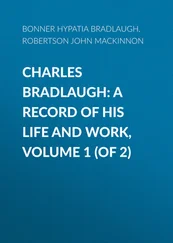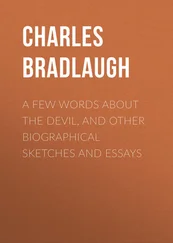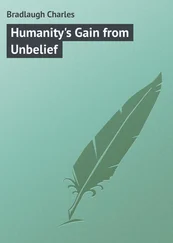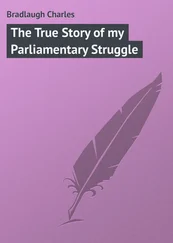Charles Bradlaugh - When Were Our Gospels Written?
Здесь есть возможность читать онлайн «Charles Bradlaugh - When Were Our Gospels Written?» — ознакомительный отрывок электронной книги совершенно бесплатно, а после прочтения отрывка купить полную версию. В некоторых случаях можно слушать аудио, скачать через торрент в формате fb2 и присутствует краткое содержание. Жанр: foreign_prose, на английском языке. Описание произведения, (предисловие) а так же отзывы посетителей доступны на портале библиотеки ЛибКат.
- Название:When Were Our Gospels Written?
- Автор:
- Жанр:
- Год:неизвестен
- ISBN:нет данных
- Рейтинг книги:3 / 5. Голосов: 1
-
Избранное:Добавить в избранное
- Отзывы:
-
Ваша оценка:
- 60
- 1
- 2
- 3
- 4
- 5
When Were Our Gospels Written?: краткое содержание, описание и аннотация
Предлагаем к чтению аннотацию, описание, краткое содержание или предисловие (зависит от того, что написал сам автор книги «When Were Our Gospels Written?»). Если вы не нашли необходимую информацию о книге — напишите в комментариях, мы постараемся отыскать её.
When Were Our Gospels Written? — читать онлайн ознакомительный отрывок
Ниже представлен текст книги, разбитый по страницам. Система сохранения места последней прочитанной страницы, позволяет с удобством читать онлайн бесплатно книгу «When Were Our Gospels Written?», без необходимости каждый раз заново искать на чём Вы остановились. Поставьте закладку, и сможете в любой момент перейти на страницу, на которой закончили чтение.
Интервал:
Закладка:
Charles Bradlaugh
When Were Our Gospels Written?
PREFATORY NOTE TO FOURTH EDITION.
Since this pamphlet was originally penned in 1867, the
author of "Supernatural Religion" has in his three volumes
placed a very storehouse of information within the easy
reach of every student, and many of Dr. Teschendorf's
reckless statements have been effectively dealt with in that
masterly work. In the present brief pamphlet there is only
the very merest index to matters which in "Supernatural
Religion" are exhaustively treated. Part II. of "The
Freethinkers' Text-Book," by Mrs Besant, has travelled over
the same ground with much care, and has given exact
reference to authorities on each point.
The Religious Tract Society, some time since, issued, prefaced with their high commendation, a translation of a pamphlet by Dr. Constantine Tischendorf, entitled "When were our Gospels Written?" In the introductory preface we are not unfairly told that "on the credibility of the four Gospels the whole of Christianity rests, as a building on its foundations." It is proposed in this brief essay to deal with the character of Dr. Tischendorf's advocacy, then to examine the genuineness of the four Gospels, as affirmed by the Religious Tract Society's pamphlet, and at the same time to ascertain, so far as is possible in the space, how far the Gospel narrative is credible.
The Religious Tract Society state that Dr. Tischendorf's brochure is a repetition of "arguments for the genuineness and authenticity of the four Gospels," which the erudite Doctor had previously published for the learned classes, "with explanations" now given in addition, to render the arguments "intelligible" to meaner capacities; and as the "Infidel" and "Deist" are especially referred to as likely to be overthrown by this pamphlet, we may presume that the society considers that in the 119 pages – which the translated essay occupies – they have presented the best paper that can be issued on their behalf for popular reading on this question. The praise accorded by the society, and sundry laudations appropriated with much modesty in his own preface by Dr. Constantine Tischendorf to himself, compel one at the outset to regard the Christian manifesto as a most formidable production. The Society's translator impressively tells us that the pamphlet has been three times printed in German and twice in France; that it has been issued in Dutch and Russian, and is done into Italian by an Archbishop with the actual approbation of the Pope. The author's preface adds an account of his great journeyings and heavy travelling expenses incurred out of an original capital of a "few unpaid bills," ending in the discovery of a basketful of old parchments destined for the flames by the Christian monks in charge, but which from the hands of Dr. Teschendorf are used by the Religious Tract Society to neutralise all doubts, and to "blow to pieces" the Rationalistic criticism of Germany and the coarser Infidelity of England. Doubtless Dr. Teschendorf and the Society consider it some evidence in favor of the genuineness and authenticity of the four Gospels that the learned Doctor was enabled to spend 5,000 dollars out of less than nothing, and that the Pope regards his pamphlet with favor, or they would not trouble to print such statements. We frankly accord them the full advantage of any argument which may fairly be based on such facts. An autograph letter of endorsement by the Pope is certainly a matter which a Protestant Tract Society – who regard "the scarlet whore at Babylon" with horror – may well be proud of.
Dr. Tischendorf states that he has since 1839 devoted himself to the textual study of the New Testament, and it ought to be interesting to the orthodox to know that, as a result of twenty-seven years' labor, he now declares that "it has been placed beyond doubt that the original text… had in many places undergone such serious modifications of meaning, as to leave us in painful uncertainty as to what the apostles had actually written," and that "the right course to take" "is to set aside the received text altogether and to construct a fresh text."
This is pleasant news for the true believer, promulgated by authority of the managers of the great Christian depot in Paternoster Row, from whence many scores of thousands of copies of this incorrect received text have nevertheless been issued without comment to the public, even since the society have published in English Dr. Tischendorf s declaration of its unreliable character.
With the modesty and honorable reticence peculiar to-great men, Dr. Tischendorf records his successes in reading hitherto unreadable parchments, and we learn that he has received approval from "several learned bodies, and even from crowned heads," for his wonderful performances. As a consistent Christian, who knows that the "powers that be are ordained of God," our "critic without rival," for so he prints himself, regards the praise of crowned heads as higher in degree than that of learned bodies.
The Doctor discovered in 1844 the MS. on which he now relies to confute audacious Infidelity, in the Convent of St. Catherine at Sinai; he brought away a portion, and handed! that portion, on his return, to the Saxon Government – they paying all expenses. The Doctor, however, did not then divulge where he had found the MS. It was for the advantage of humankind that the place should be known at once, for, at least, two reasons. First, because by aid of the remainder of this MS. – "the most precious Bible treasure in existence" – the faulty text of the New Testament was to be reconstructed; and the sooner the work was done the better for believers in Christianity. And, secondly, the whole story of the discovery might then have been more easily confirmed in every particular.
For fifteen years, at least, Dr. Tischendorf hid from the world the precise locality in which his treasure had been discovered. Nay, he was even fearful when he knew that other Christians were trying to find the true text, and he experienced "peculiar satisfaction" when he ascertained that his silence had misled some pious searchers after reliable copies of God's message to all humankind; although all this time he was well aware that our received copies of God's revelation had undergone "serious modifications" since the message had been delivered from the Holy Ghost by means of the Evangelists.
In 1853, "nine years after the original discovery," Dr. Tischendorf again visited the Sinai convent, but although he had "enjoined on the monks to take religious care" of the remains of which they, on the former occasion, would not yield up possession, he, on this second occasion, and apparently after careful search, discovered "eleven short lines," which convinced him that the greater part of the MS. had been destroyed. He still, however, kept the place secret, although he had no longer any known reason for so doing; and, having obtained an advance of funds from the Russian Government, he, in 1859, tried a third time for his "pearl of St. Catherine," which, in 1853, he felt convinced had been destroyed, and as to which he had nevertheless, in the meantime, been troubled by fears that the good cause might be aided by some other than Dr. Teschendorf discovering and publishing the "priceless treasure," which, according to his previous statements, he must have felt convinced did not longer exist. On this third journey the Doctor discovered "the very fragments which, fifteen years before, he had taken out of the basket," "and also other parts of the Old Testament, the New Testament complete, and, in addition, Barnabas and part of Hermas."
With wonderful preciseness, and with great audacity, Dr. Tischendorf refers the transcription of the discovered Bible to the first half of the fourth century. Have Dr. Tischendorf's patrons here ever read of MSS. discovered in the same Convent of St. Catherine, at Sinai, of which an account was published by Dr. Constantine Simonides, and concerning which the Westminster Review said, "We share the suspicions, to use the gentlest word which occurs to us, entertained, we believe, by all competent critics and antiquarians."
Читать дальшеИнтервал:
Закладка:
Похожие книги на «When Were Our Gospels Written?»
Представляем Вашему вниманию похожие книги на «When Were Our Gospels Written?» списком для выбора. Мы отобрали схожую по названию и смыслу литературу в надежде предоставить читателям больше вариантов отыскать новые, интересные, ещё непрочитанные произведения.
Обсуждение, отзывы о книге «When Were Our Gospels Written?» и просто собственные мнения читателей. Оставьте ваши комментарии, напишите, что Вы думаете о произведении, его смысле или главных героях. Укажите что конкретно понравилось, а что нет, и почему Вы так считаете.












